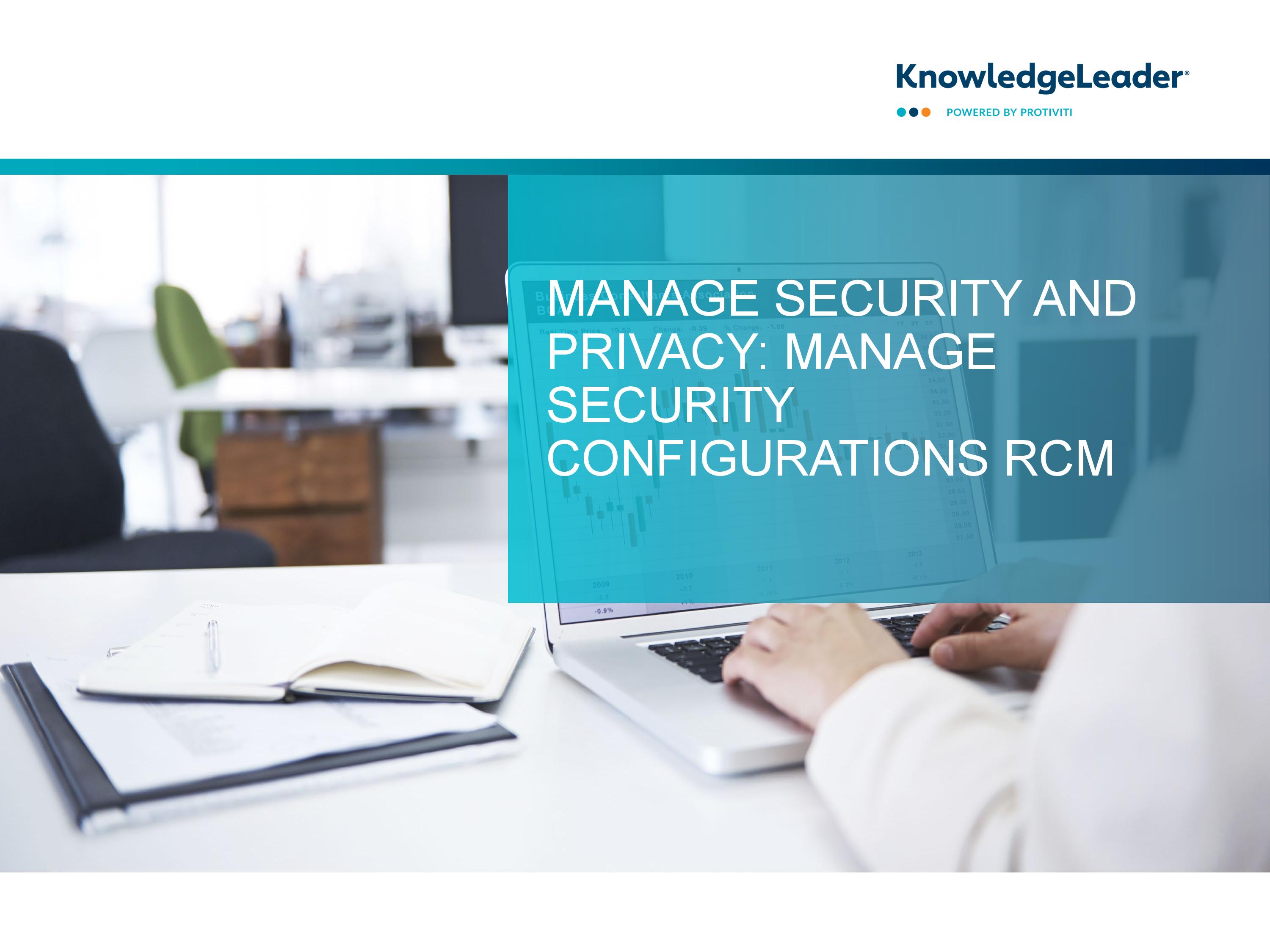Manage Security and Privacy: Manage Security Configurations RCM

A successful risk management strategy requires a strong internal control environment. The risk control matrix (RCM) format emphasizes that strong and risk-oriented internal control environments are often optimized with automated/manual controls, depending on the situation.
An RCM provides an overview of different control objectives that organizations should take into consideration and the corresponding controls to safeguard the company against risks, which may arise if not checked timely. Once customized to an organization, this document can help the user in assessing each control. The control assessment can then also be summarized to develop an action plan.
This document outlines risks and controls common to managing security configurations during the 4.2 Manage Security and Privacy process in a risk control matrix (RCM) format.
Sample risks include:
- Key financial data/programs are intentionally or unintentionally modified.
- Security and password configuration is not optimized to prevent unauthorized access.
- Unauthorized access attempts are not detected and resolved by management.
- Unauthorized users are granted access to applicable logical access layers.
- Unauthorized users are granted key privileged rights.
This document can be used as a sample RCM and is not meant to be an exhaustive list of risks and controls. The KnowledgeLeader team will periodically update this RCM with new content. Organizations should select, update and modify the risks and controls included in this document to ensure that it reflects business operations.